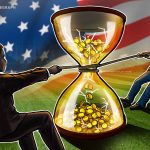QE, QE QE!
Quantitative easing, or the vast expansion of the money supply by central banks, has been the hallmark of this decade as troubled governments sought to heal sickly economies.
And so far, it has worked. There is no doubt that the implementation of QE, first by the US, and then by Europe, Japan, and China, staved off another Great Depression.
Assets everywhere loved it!
QE was able to bridge the demographic gap created by the retirement of 80 million baby boomers, which started in 2006 and won’t end until 2022.
The last two times a bulge generation retired, the 1930’s and the 1970s, QE hadn’t been invented yet and the economy and the stock market fell to pieces.
QE is now in its seventh year in some form or another.
The hot button topic discussed among government planners, economists, and investors these days has rapidly become, “What will happen when QE fails.”
What tools will central banks have when we go into the next recession with interest rates already at zero, or negative? Will the Fed run out of bullets and be powerless to help us out of our misery?
Will stock markets crash?
It turns out that there are quite a few things the government can still do.
Here is how the government can return us to prosperity in the next economic downturn:
1) More QE
Yes you heard me right. If at first you don’t succeed, try, try again. Since the Fed can’t lower interest rates from zero, it will resort to some new tricks.
Most US QE has so far been focused on buying US Treasury notes, bills, and bonds, thus expanding the Fed balance sheet to an unprecedented $3.5 trillion.
During the height of the financial crisis, the Fed expanded its buying to include bank commercial paper and mortgage backed securities, then trading at enormous discounts.
Future QE cycles could include government buying of stocks, corporate bonds, junk bonds, and even commercial real estate in depressed city centers (Detroit).














Leave A Comment